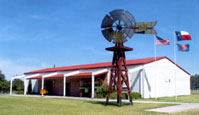|
April 24, 2011
WOLF CREEK HERITAGE MUSEUM NOTES by Virginia Scott MUSEUM HAPPENINGS Easter Sunday was cloudy but pretty and sprinkles began during the night. This Monday morning is foggy and dew or sprinkles are still present. WE HAVE WET SIDEWALKS AND ROADS, it proves we still have moisture and hope for real rain is just around the corner. Our photographic project continues and the changes in the storage containers will both maintain the photos but make it easier to locate a specific photograph. Now that the core team has their system perfected they are progressing nicely. This is the last week for our March / April exhibit of the great photographs by Jerry Helmuth and art and furniture by Gary Steinberger. If you haven't seen the exhibit , call before you come because it might disappear on Wednesday . Our May / June exhibit will be the beautiful work of Pam and Missy Tyson. I am sure most will be textile pieces but I am also sure they will be some surprises. We are very pleased to have Pam's work since she is recognized as an expert quilter on an international level. Missy is right behind her so I am sure the exhibit will be a great one. May 1 is emergency preparedness day for Museums across the United States. We will be arranging a visit by some of our firefighters to inspect our museum and grounds and giving us some safety hints. We hope they will also be able to assist me with our disaster plan. Historical Happenings April has always been remembered for the Black Sunday dust storm in 1935. It was the storm that covered the Texas Panhandle and inspired Woody Guthrie to write the song "Sl Long, It's Been Good To Know You." Guthrie had moved to Pampa in 1929. Performing with bands at nightclubs and radio stations in the Panhandle. When the great storm of April 14, occurred some people thought that the end of the world was upon them and that there was just time for final goodbyes. Tired of dust and poverty, Guthrie left for Los Angeles in 1937. Pampa currently holds musical festivals in Guthrie's name and has a museum in his name. It was also April when Kiowa Chief White Horse (Tsen-tainte) and a group of his followers surrendered at Fort Sill, Indian Territory. White Horse had gained considerable notoriety during the early 1870s for his raids on Texas settlements, and was considered the "most dangerous man" among the Kiowas. He participated in the Warren wagontrain raid in May 1871 and in the second battle of Adobe Walls in June 1874. He was also present in September 1874 at the battle of Palo Duro Canyon, which apparently convinced him that further resistance was futile. White Horsewas among those singled out by Kicking Bird for incarceration at St. Augustine, Florida. He died of a stomach ailment in 1892 and was buried on the reservation near Fort Sill. The Kiowas frequently stopped at the Polly Hotel in Lipscomb County which was the half stop between Ft. Sill and Ft. Eliott. Sources for Historical Happenings is the Texas State Historical Association "Texas Day by Day" email column. |
 |
© 2006 - 2025 Wolf Creek Heritage Museum
All Rights Reserved |


